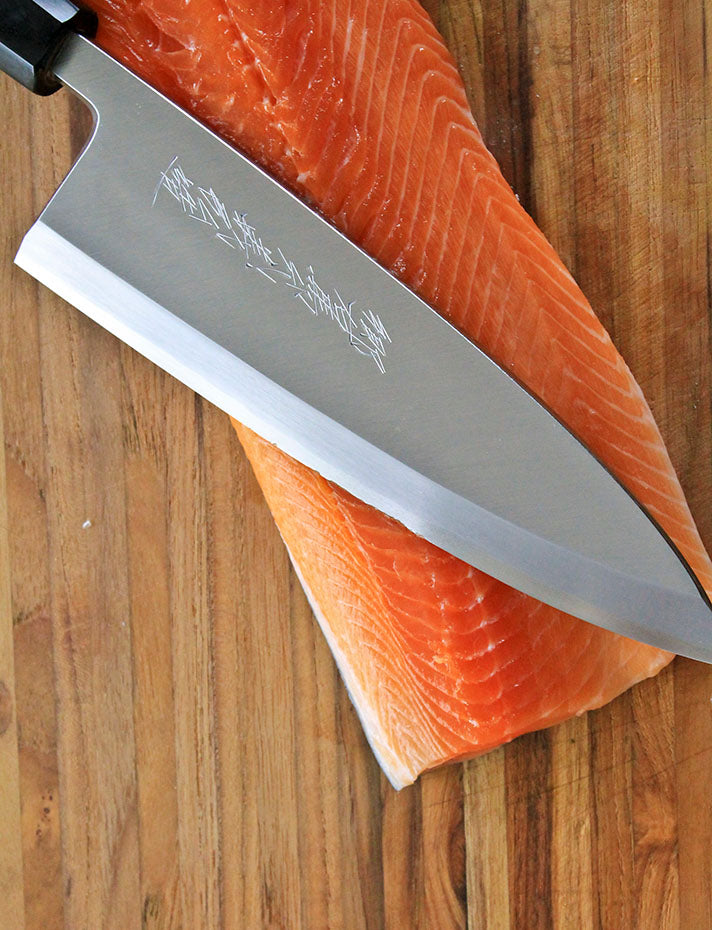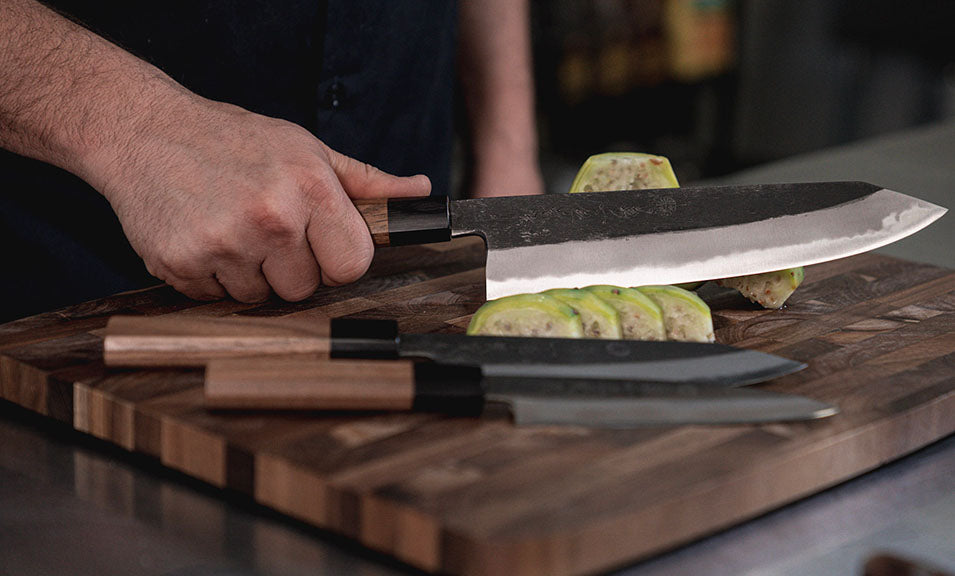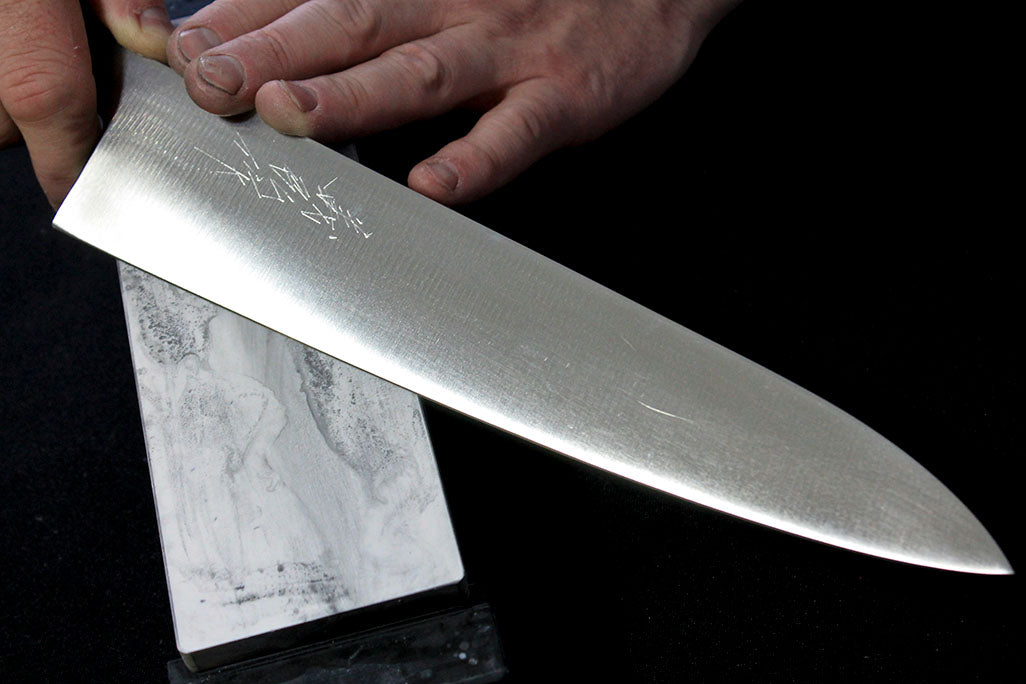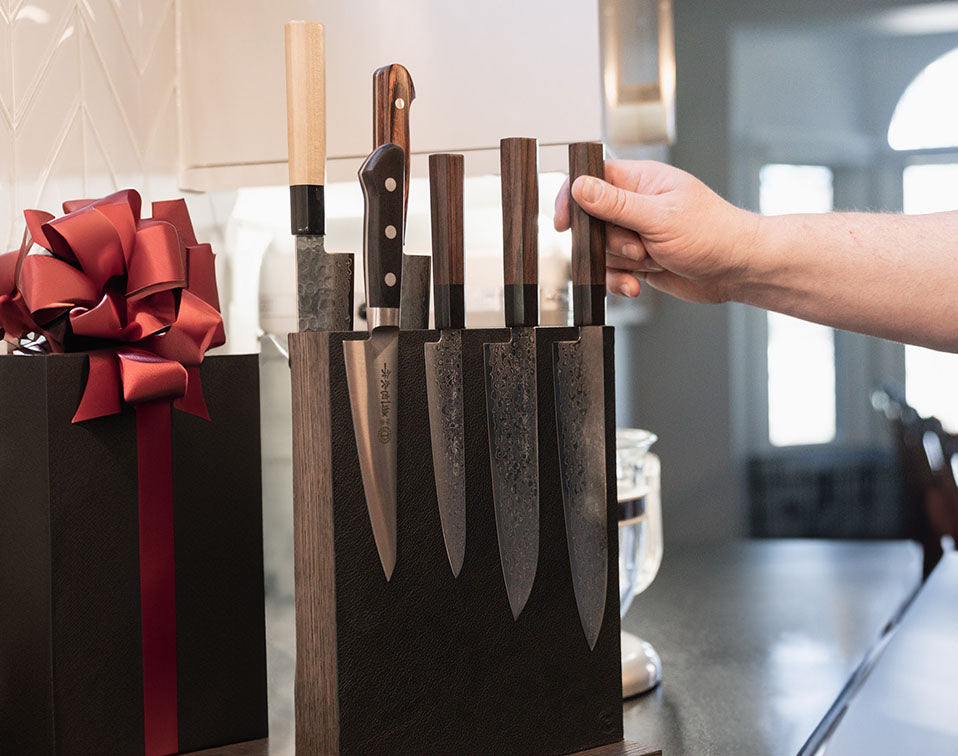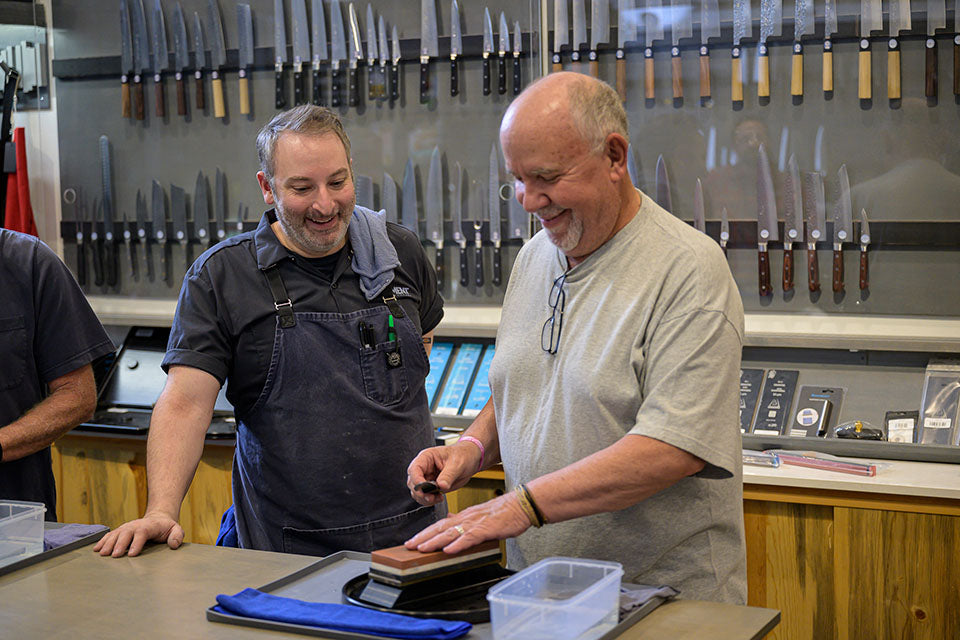Know Your Knife
In this section we will break down the various knife types and give you a general idea of why they all exist. It's important to have a general idea of what knife types are available and why you might need them before you invest in your tools as a home or pro chef.

Daily Drivers
Everyday Essentials For Your Kitchen

Daily Drivers
CHEF KNIFE & GYUTO

DAILY DRIVERS
CÀIDĀO

DAILY DRIVERS
SANTOKU

Daily Drivers
Funayuki, 舟行

DAILY DRIVERS
UTILITY & PETTY KNIVES

DAILY DRIVERS
SERRATED

DAILY DRIVERS
SPEAR POINT PARING KNIFE

DAILY DRIVERS
SHEEPSFOOT PARING KNIFE

DAILY DRIVERS
TORNÉ PARING KNIFE
Purpose Driven
Designed For Specific Tasks

PURPOSE DRIVEN
NAKIRI

PURPOSE DRIVEN
BONING KNIVES

PURPOSE DRIVEN
FILLET KNIVES

PURPOSE DRIVEN
HANKOTSU HONESUKI

PURPOSE DRIVEN
KAKU HONESUKI

PURPOSE DRIVEN
GARASUKI

PURPOSE DRIVEN
CARVING AND SLICING KNIVES

PURPOSE DRIVEN
CHEESE KNIFE

PURPOSE DRIVEN
MEAT CLEAVER

PURPOSE DRIVEN
SCIMETAR

PURPOSE DRIVEN
SUJIHIKI

PURPOSE DRIVEN
STEAK KNIVES
Single-Bevel
Traditional Japanese Knives For Professional Kitchens

SINGLE-BEVEL
YANAGI

SINGLE-BEVEL
KIRITSUKE YANAGI

SINGLE-BEVEL
TAKOHIKI

SINGLE-BEVEL
SAKIMARU TAKOBIKI

SINGLE-BEVEL
FUGUHIKI

SINGLE-BEVEL
DEBA

SINGLE-BEVEL
MIOROSHI DEBA
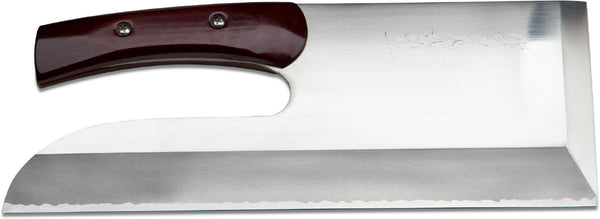
SINGLE-BEVEL
SOBAKIRI, そば切 • UDONKIRI, うどん切 • MENKIRI, 麺切包丁

SINGLE-BEVEL
KAMAGATA USUBA

SINGLE-BEVEL
KANTO USUBA

SINGLE-BEVEL
KIRITSUKE
- Choosing a selection results in a full page refresh.
!

